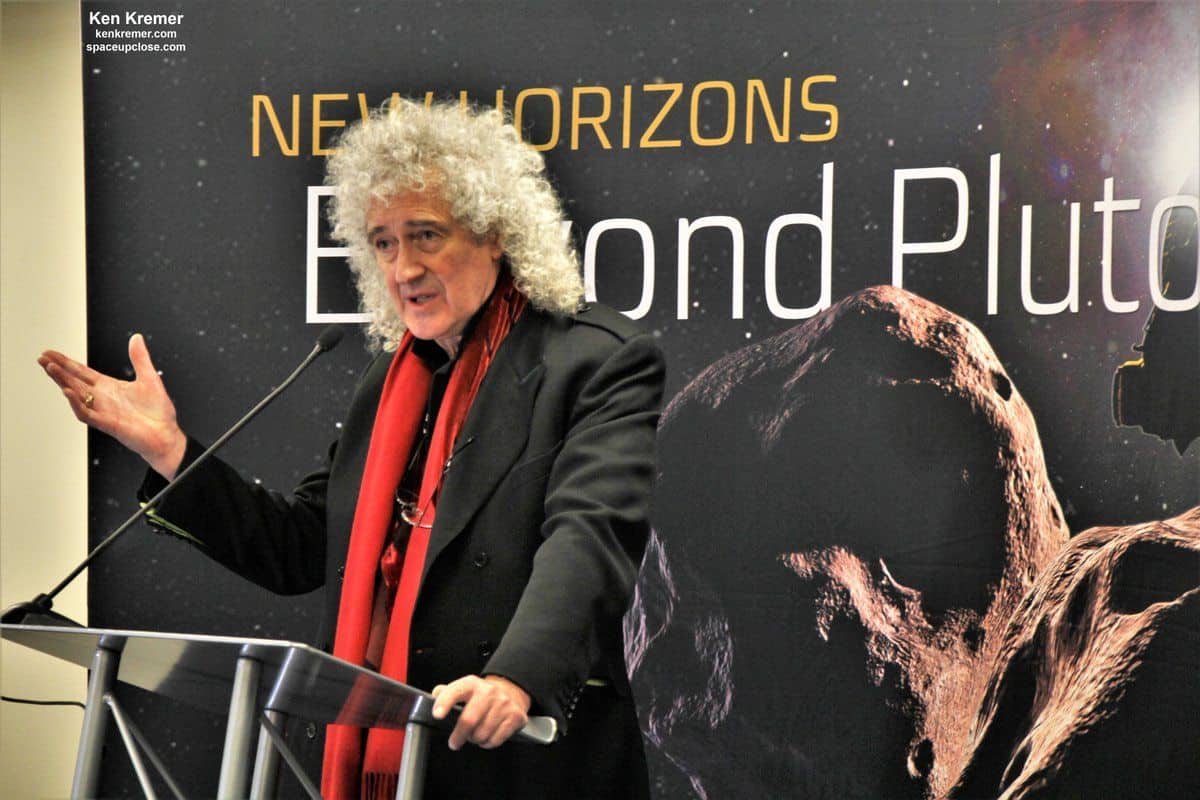Brian May has debuted New Horizons, his first solo track in 20 years, to celebrate NASA’s mission that gave us our best ever look at Pluto and should, all being well, soon return images of Kuiper belt object Ultima Thule.
The song and its accompanying music video is a celebration of the science involved with the New Horizons mission. Visuals show the probe’s mission to Pluto, including its Jupiter gravity assist.
The song starts with words spoken by Professor Stephen Hawking, explaining that New Horizons will teach us about how the solar system was formed.
May’s vocals then kick in with a comforting familiarity that Queen fans will recognise immediately.
He sings “New Horizons to explore, New Horizons no one’s ever seen before” while the video shows the probe leaving Earth’s orbit and heading out into the solar system.
Celebrating the whole 12-year Journey of New Horizons probe. This is Brian’s personal tribute to the on-going NASA New Horizons mission.
https://youtu.be/j3Jm5POCAj8ons
The NASA spacecraft has flown past the most distant world ever studied by humankind – sparking jubilant celebrations from scientists.
The New Horizons spacecraft paid a visit to the tiny, icy world of Ultima Thule, which lies one billion miles beyond Pluto, in the early hours of New Year’s Day.
Roughly 20 miles long and shaped like a giant peanut, the mysterious object lies four billion miles from Earth.
It will take an estimated 10 hours for flight controllers to find out whether the spacecraft has survived the close encounter and will find out if the pass was successful at about 3pm UK time.
Clear images of the cosmic body are expected to emerge in the coming days.
As crowds cheered at the Johns Hopkins Applied Physics Laboratory in Maryland, the mission’s lead scientist Alan Stern said: “Go New Horizons! Never before has a spacecraft explored something so far away.”
John Spencer, from the Southwest Research Institute, added: “Now it is just a matter of time to see the data coming down.”
The spacecraft was aiming to collect about 900 images in a matter of seconds as it travelled past from a distance of approximately 2,000 miles.
More information coming soon……

